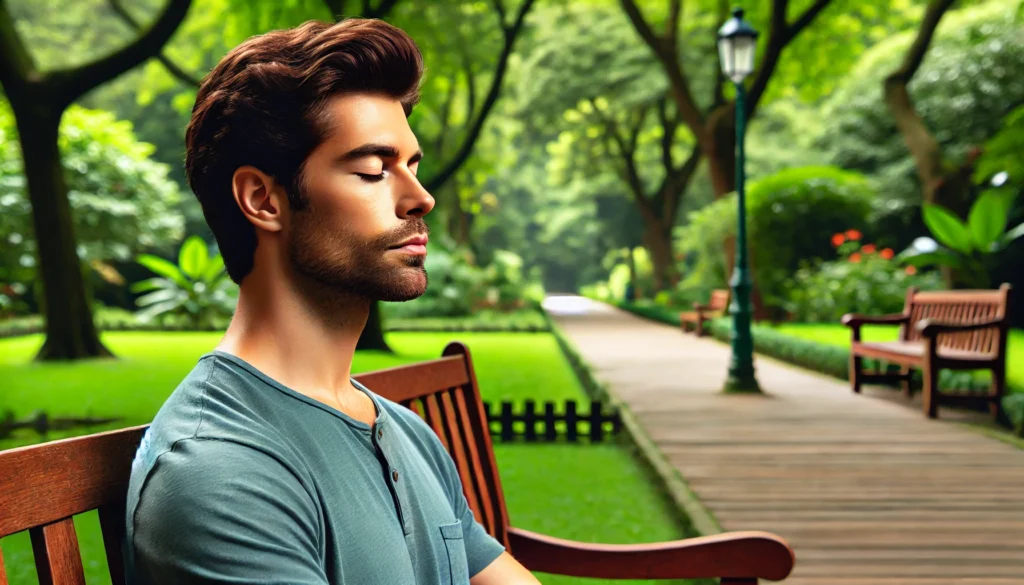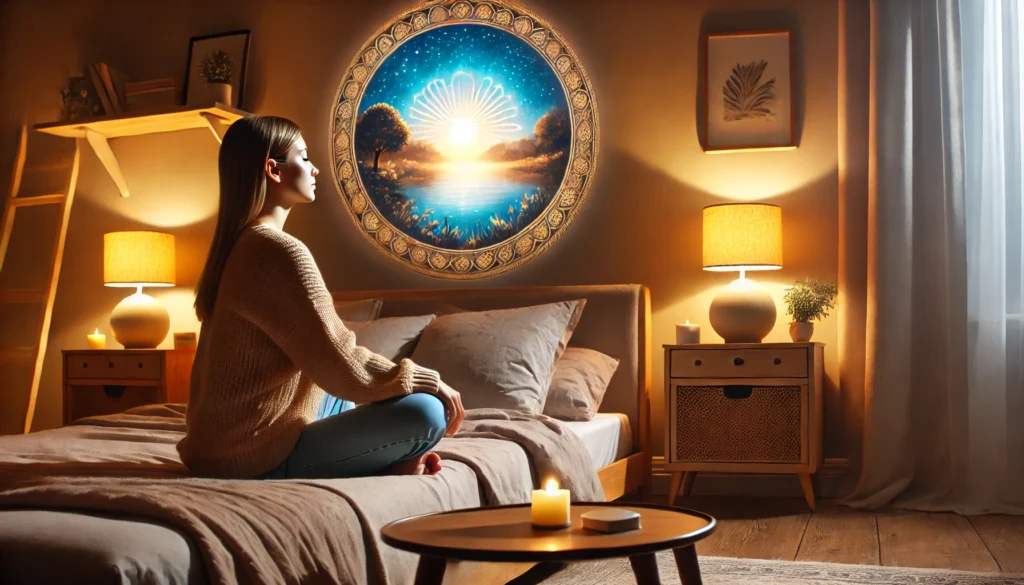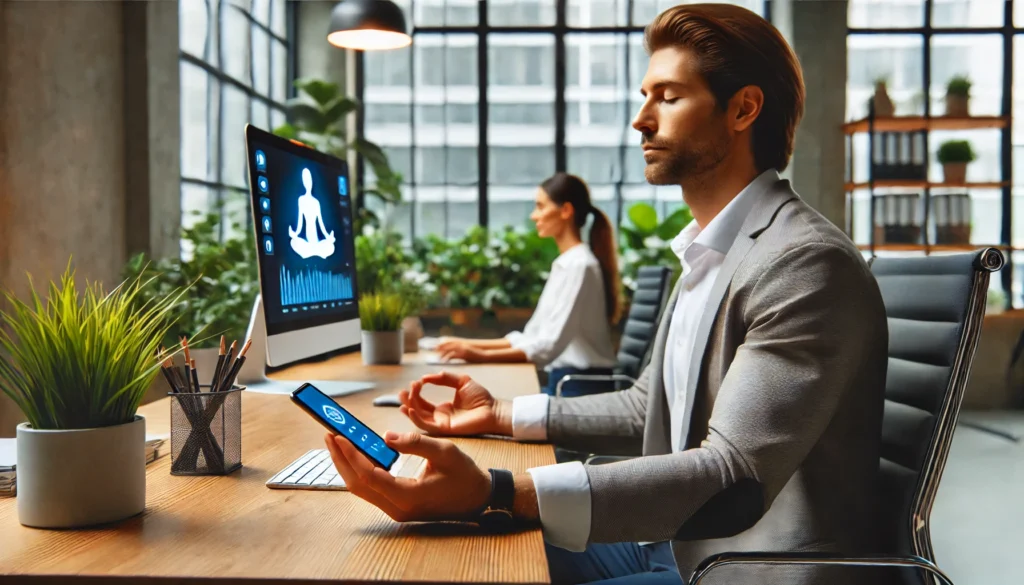Anxiety is more than just occasional worry or fear; it can manifest as a persistent feeling of apprehension, often accompanied by physical symptoms such as increased heart rate, sweating, and tension. Understanding the underlying causes and recognizing the symptoms are crucial steps toward managing anxiety effectively.
You may also like: Stress Relief: Sentences to Calm Your Mind
The Psychological Impact of Anxiety
Anxiety disorders can significantly impact daily life, affecting concentration, productivity, and relationships. Individuals may experience racing thoughts, constant worry, and difficulty in decision-making, which can exacerbate feelings of helplessness. Recognizing these psychological symptoms is vital for seeking timely intervention.
Physical Manifestations of Anxiety
Beyond the mental strain, anxiety often results in physical symptoms like headaches, digestive issues, and muscle tension. These physiological responses can further heighten the sense of distress, creating a vicious cycle. Acknowledging these symptoms can lead to more holistic management strategies.
Societal and Economic Consequences
Anxiety is not just a personal issue; it has broader societal implications. High levels of anxiety can lead to increased absenteeism from work or school, impacting economic productivity. Additionally, the strain on healthcare systems underscores the importance of effective management techniques.
Historical Context of Relaxation Techniques
The origins of relaxation techniques can be traced back to ancient practices such as yoga and meditation, which have been used for centuries to promote mental clarity and emotional equilibrium. These time-honored traditions have evolved, integrating contemporary research to form the basis of modern relaxation exercises.
Ancient Practices and Philosophies
From the meditative practices of the Buddhist monks to the yogic traditions of ancient India, the roots of relaxation techniques are deeply embedded in history. These practices were often intertwined with spiritual beliefs, emphasizing harmony between mind, body, and spirit.
Evolution Through the Ages
As societies evolved, so did the methods of relaxation. The 20th century saw the incorporation of scientific research into these ancient practices, giving rise to new approaches that combined traditional wisdom with modern psychology. This evolution has broadened the accessibility and appeal of relaxation exercises.
Integration in Modern Therapeutic Practices
Today, relaxation techniques are a staple in therapeutic settings, used alongside other treatments for mental health disorders. The integration of these practices into mainstream therapy reflects their efficacy and growing acceptance in the medical community.

Types of Relaxation Techniques
To cater to different needs and preferences, relaxation techniques come in various forms, each with its unique approach to easing anxiety.
Breathing Techniques for Anxiety
Breathing exercises are fundamental in managing anxiety. They help regulate the body’s stress response by activating the parasympathetic nervous system, which promotes relaxation.
Diaphragmatic Breathing
Diaphragmatic breathing involves deep breathing from the diaphragm rather than shallow chest breathing. This technique enhances oxygen exchange and can immediately reduce stress levels. Regular practice can lead to long-term improvements in respiratory efficiency and stress management.
Box Breathing
Also known as four-square breathing, box breathing involves inhaling, holding the breath, exhaling, and pausing each for a count of four. It’s particularly useful for calming the mind in high-pressure situations. This method is often used by athletes and military personnel to maintain composure under stress.
Alternate Nostril Breathing
Rooted in yogic traditions, alternate nostril breathing balances the left and right hemispheres of the brain. This technique not only calms the mind but also enhances mental clarity and focus, making it a powerful tool for anxiety reduction.
Progressive Muscle Relaxation (PMR)
PMR is a systematic technique that involves tensing and then slowly relaxing each muscle group in the body. This method not only reduces physical tension but also heightens awareness of bodily sensations, fostering a deeper connection between mind and body.
Step-by-Step Guide to PMR
Begin by finding a comfortable position, either sitting or lying down. Focus on each muscle group, starting from your toes and working your way up to your head. Tense each group for a few seconds before releasing, noticing the contrast between tension and relaxation.
Benefits of PMR
Regular practice of PMR can lead to reduced muscle tension and decreased anxiety levels. It also promotes better sleep and can be particularly beneficial for individuals with chronic pain, as it enhances awareness and control over bodily sensations.
Incorporating PMR into Daily Life
Integrate PMR into your daily routine by setting aside time each day, even if it’s just a few minutes. Consistency is key to experiencing the full benefits. Consider using guided audio sessions to help maintain focus and ensure proper technique.
Visualization and Guided Imagery
This technique leverages the power of imagination to create calming and serene mental images, transporting the mind to a place of peace and tranquility. Guided imagery can be practiced with the assistance of audio recordings or through personal visualization exercises.
Techniques for Effective Visualization
Start by closing your eyes and taking a few deep breaths to center yourself. Visualize a peaceful scene, such as a beach or forest, focusing on the details—the sounds, smells, and sensations. This immersive experience can significantly reduce stress levels.
Guided Imagery Tools and Resources
Numerous resources, including apps and online platforms, offer guided imagery exercises. These tools provide step-by-step instructions, making it easier to engage in visualization practices. Exploring different resources can help you find ones that resonate with you.
Benefits of Visualization
Visualization not only reduces anxiety but also enhances creativity and problem-solving skills. By regularly practicing guided imagery, individuals can develop a greater ability to manage stress and cultivate a more positive mindset.
Mindfulness Meditation
Mindfulness involves paying full attention to the present moment without judgment. It encourages awareness of thoughts, emotions, and sensations, helping individuals to detach from anxious thoughts and establish a sense of peace.
Core Principles of Mindfulness
Mindfulness is rooted in non-judgmental awareness and acceptance. By focusing on the present moment, individuals learn to observe their thoughts and feelings without being overwhelmed by them. This practice fosters emotional resilience and mental clarity.
Techniques to Cultivate Mindfulness
Simple practices, such as mindful breathing or body scan meditation, can be incorporated into daily routines. These techniques encourage individuals to focus on their breath or bodily sensations, anchoring them in the present moment and reducing anxiety.
Mindfulness in Everyday Activities
Mindfulness doesn’t have to be confined to formal meditation sessions. Everyday activities, such as eating or walking, can be opportunities to practice mindfulness. By bringing full attention to these tasks, individuals can cultivate a more mindful and grounded approach to life.
Yoga and Tai Chi
These ancient practices combine physical movement, breath control, and meditation to enhance physical and mental balance. They are effective in reducing stress and anxiety, promoting flexibility, and improving overall health.
The Synergy of Movement and Breath
Yoga and Tai Chi emphasize the integration of breath with movement, creating a meditative flow that enhances relaxation. This synergy not only reduces stress but also improves physical health, promoting balance, strength, and flexibility.
Different Styles and Their Benefits
Various styles of yoga and Tai Chi cater to different preferences and abilities. From the gentle flow of Hatha yoga to the dynamic sequences of Vinyasa, each style offers unique benefits. Exploring different practices can help you find the one that best suits your needs.
Incorporating Practices into Daily Routines
Regular practice of yoga or Tai Chi can significantly reduce anxiety levels. Consider joining a class or using online resources to guide your practice. Even a short daily session can lead to profound improvements in both mental and physical well-being.

Practical Tips for Implementing Relaxation Exercises
Creating a Relaxation Routine
Consistency is key to reaping the benefits of relaxation exercises. Establishing a regular routine, even if it’s just a few minutes each day, can significantly impact anxiety levels over time.
Setting Realistic Goals
Start by setting achievable goals that fit into your lifestyle. Consistency is more important than duration, so begin with short, manageable sessions and gradually increase the time as you become more comfortable with the exercises.
Tracking Progress and Adjusting
Keep a journal to track your progress and reflect on the effects of your practice. Note any changes in your anxiety levels, sleep patterns, or overall well-being. This reflection can help you adjust your routine to better meet your needs.
Maintaining Motivation
Staying motivated can be challenging, especially when starting. Find ways to keep your practice engaging, such as trying new techniques or joining a group class. Celebrating small milestones can also reinforce your commitment and progress.
Finding the Right Environment
Choose a quiet, comfortable space free from distractions to practice relaxation exercises. This setting fosters a conducive atmosphere for relaxation and mindfulness.
Creating a Dedicated Space
Designate a specific area in your home for relaxation practices. This space should be free from clutter and equipped with comfortable seating or mats. Personalize it with calming elements like plants, candles, or soothing music to enhance the atmosphere.
Minimizing Distractions
Ensure your practice area is free from potential distractions, such as electronic devices or loud noises. Consider using noise-canceling headphones or playing soft background music to create a serene environment conducive to relaxation.
Adapting to Different Settings
While a dedicated space is ideal, relaxation exercises can be practiced anywhere. Learn to adapt techniques to different environments, such as your workplace or a park, to maintain your routine even when you’re away from home.
Incorporating Technology
The digital age offers a plethora of apps and online resources that provide guided relaxation exercises, meditation sessions, and breathing techniques, making it easier than ever to incorporate these practices into daily life.
Exploring Apps and Online Platforms
Numerous apps offer guided exercises tailored to various needs, from stress reduction to improving sleep. Explore different platforms to find those that align with your preferences and provide the guidance you need for effective practice.
Using Wearable Technology
Wearable devices, such as fitness trackers, can monitor stress levels and provide reminders to practice relaxation techniques. These tools offer insights into your progress and help maintain consistency in your practice.
Balancing Screen Time
While technology can aid relaxation practices, it’s important to balance screen time with offline activities. Consider using technology as a supplement rather than a replacement for traditional methods, ensuring a holistic approach to relaxation.

The Science Behind Relaxation Techniques
Research supports the efficacy of relaxation techniques in managing anxiety. Studies have shown that these practices can lower cortisol levels (the stress hormone), reduce blood pressure, and improve overall mental health. Understanding the scientific underpinnings of these techniques provides an additional layer of confidence for those seeking relief from anxiety.
How Relaxation Techniques Affect the Brain
Relaxation exercises can alter brainwave patterns, promoting states associated with calmness and focus. Techniques like meditation have been shown to increase the activity in areas of the brain responsible for emotional regulation, enhancing one’s ability to cope with stress.
The Physiological Benefits of Relaxation
In addition to mental health benefits, relaxation techniques positively impact physical health. Regular practice can lead to lower blood pressure, improved heart rate variability, and enhanced immune function, contributing to overall well-being.
Research and Clinical Trials
Ongoing research continues to explore the potential of relaxation techniques in treating anxiety and related disorders. Clinical trials have demonstrated the effectiveness of these practices in reducing symptoms of anxiety, providing valuable evidence for their use in therapeutic settings.
Future Implications
As our understanding of the mind-body connection deepens, the role of relaxation techniques in mental health care continues to expand. Future research may uncover new insights into optimizing these practices for even greater effectiveness, offering hope for more comprehensive anxiety management solutions.
Innovations in Relaxation Practices
Emerging technologies, such as virtual reality and biofeedback, hold promise for enhancing relaxation exercises. These innovations could provide more immersive and personalized experiences, leading to improved outcomes for individuals struggling with anxiety.
Expanding Access to Relaxation Techniques
Efforts to make relaxation practices accessible to diverse populations are crucial for their widespread adoption. Tailoring techniques to different cultural and linguistic contexts can ensure that more individuals benefit from these effective strategies.
Integrating Relaxation in Holistic Health Approaches
The future of mental health care lies in holistic approaches that incorporate relaxation techniques alongside traditional therapies. By embracing a comprehensive view of health, we can create more effective and sustainable solutions for managing anxiety.
Conclusion
Relaxation exercises are a vital tool in the journey toward mental wellness, offering a beacon of calm in an often overwhelming world. By exploring and embracing these techniques, individuals can cultivate a more balanced and harmonious life, free from the shackles of anxiety.
For those seeking to deepen their understanding or share these practices with others, numerous resources, including relaxation techniques PDFs and guided audio sessions, are available to support this transformative journey. Remember, the path to tranquility begins with a single breath.
Embracing a Lifestyle of Calm
Incorporating relaxation exercises into daily life is a step toward embracing a lifestyle centered around calm and resilience. By prioritizing mental wellness, individuals can navigate life’s challenges with greater ease and confidence.
Sharing the Benefits with Others
Sharing relaxation techniques with friends, family, or community groups can amplify their impact. By fostering a supportive environment, individuals can collectively enhance their well-being and create a culture of mindfulness and relaxation.
Continuing the Journey
The journey toward mental wellness is ongoing. By remaining open to learning and adapting new techniques, individuals can continue to evolve and strengthen their practice, ensuring long-lasting benefits and a fulfilling, anxiety-free life.
Further Reading:
Relaxation Techniques for Stress Relief
Breathing exercises for stress
Important Note: The information contained in this article is for general informational purposes only, and should not be construed as health or medical advice, nor is it intended to diagnose, prevent, treat, or cure any disease or health condition. Before embarking on any diet, fitness regimen, or program of nutritional supplementation, it is advisable to consult your healthcare professional in order to determine its safety and probable efficacy in terms of your individual state of health.
Regarding Nutritional Supplements Or Other Non-Prescription Health Products: If any nutritional supplements or other non-prescription health products are mentioned in the foregoing article, any claims or statements made about them have not been evaluated by the U.S. Food and Drug Administration, and such nutritional supplements or other health products are not intended to diagnose, treat, cure, or prevent any disease.


